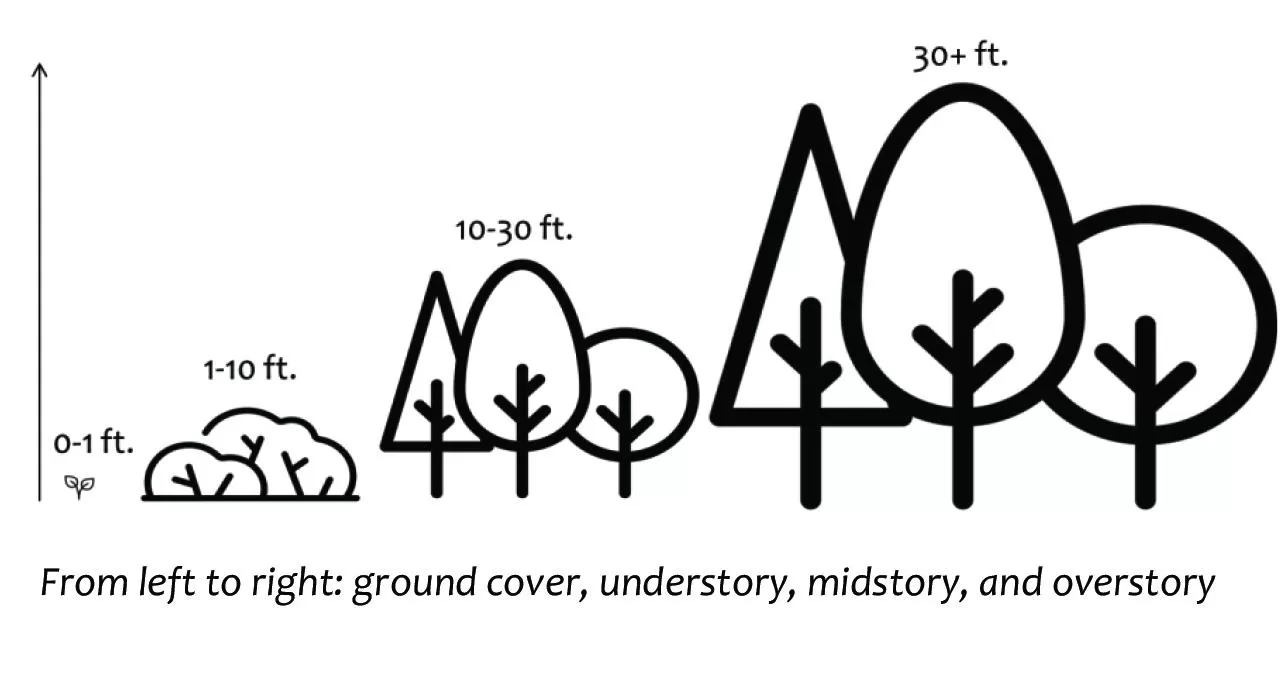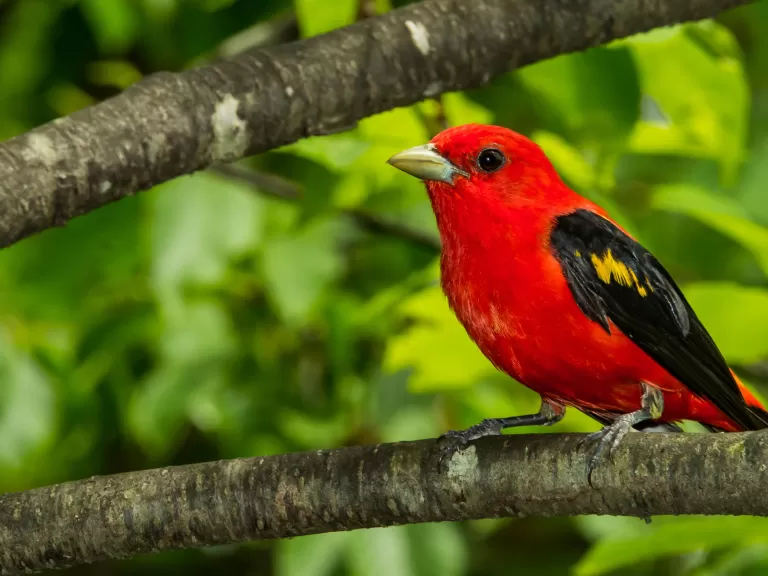Forest Health Walk, Stop 4
Vertical Diversity
Now let’s look at the vertical diversity of the forest. A forest with good vertical diversity has a variety of plants species growing at different heights.
Start by looking at the forest floor, where you may see grasses, wildflowers, and tree saplings.
As you slowly move your eyes upward, you will see shrubs and young trees of many species. If you tilt your head backward and look up toward the sky, you will see a canopy of oak and pine trees.


Different species of wildlife, especially birds, rely on plants of different heights. For example, birds like wood thrushes nest in low-level shrubs, while scarlet tanagers make their nests at least 50 feet above the ground. Porcupines and fisher both build their dens in the cavities of tall old trees.
A forest with more vertical diversity can support more wildlife species.
Vertical diversity is also crucial for forest regeneration, or the forests of tomorrow. If all of the tallest trees are roughly the same age and the same height, their leaves create a canopy that blocks light from reaching the forest floor.
It is better to have gaps in a canopy where older trees have fallen over. These gaps permit light to reach the forest floor and help young trees and other vegetation to grow.
Stop 5 is about 100 feet further along the trail.